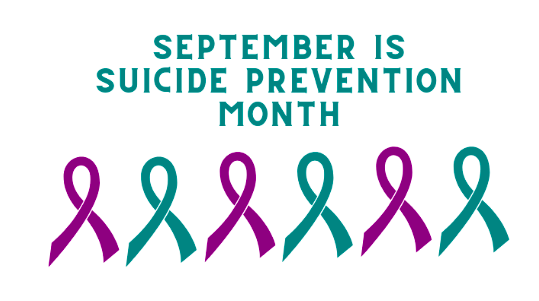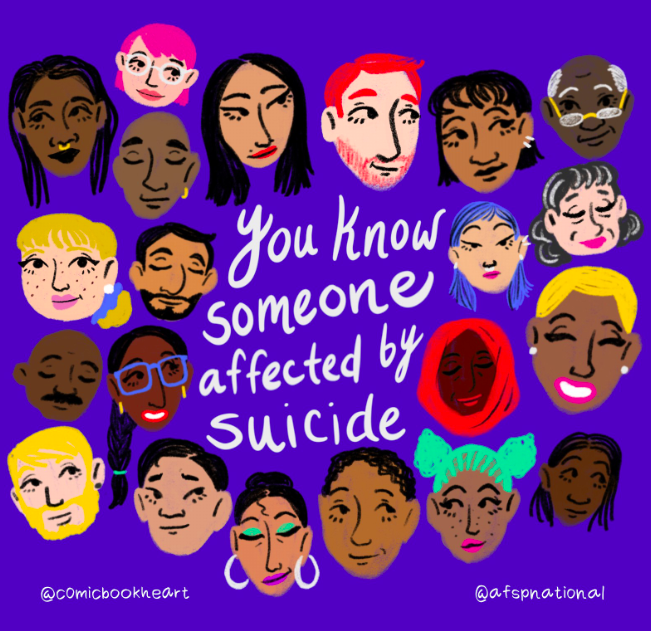September 2022 News!
Hello, everyone—
September is National Suicide Prevention Month. A month dedicated to advancing the narrative and being bold in the ways those of us enmeshed in the topic choose to move through life. Anyone experiencing the effects of suicide knows prevention is the opposite of hazard or threat; it’s the tireless work to block or stop the event from ever occurring in the first place.
For families like ours, there is no preventing what has already happened. That can be a bitter form of the truth and could impede us from moving forward in our grief and ways we continue to honor Jackson. That is not the path we have chosen. Instead, we move forward looking for ways to create opportunities for others to seek solace, gain support, and increase education on the topic of mental health and suicide prevention.
And you all are a big part of our mission.
Thank you for your love and support.
Reyne & Scott Roeder

World Suicide Prevention Day
September is National Suicide Prevention Month. Recognizing warning signs and providing resources for someone in need could be life-saving. In 2020, suicide was the twelfth leading cause of death for Americans, according to the CDC. And for people ages 10-34, it was among the top three causes of death, the agency found.
The highest suicide rates in the U.S. are among white men, according to Suicide Awareness Voices of Education. But, suicide rates also increased slightly among Black people in 2020, compared to 2019.
“We want to drill in and understand who’s at higher risk because our prevention and intervention programs need to be sector specific,” says Julie Goldstein Grumet, vice president of suicide prevention strategy and director of the Zero Suicide Institute at Education Development Center.
Prevention programs continue to do the work and offer resources, but it’s often that the loved ones of people experiencing suicidal thoughts will be able to notice signs and intervene.
Warning Signs of Suicidal Ideation
Indicators of suicidal ideation can range from verbal cues to changes in behaviors, and some aren’t as obvious as you’d think, says Goldstein Grumet.
Voicing suicidal ideations
It won’t always be as clear as “I’m going to end it all,” or “I’m going to kill myself,” she says, but if a loved one says those words to you, then they should be taken seriously.
If someone you know is talking about suicide, whether directly or indirectly, it’s important to address it, says Goldstein Grumet. Comments to pay close attention to include:
- “People would be better off without me.”
- “I wish I were dead.”
- “I can’t take it anymore.”
- “I just can’t go on.”
- “You won’t have to worry about me anymore.”
Behavioral changes including creating a plan
Any indication that someone is coming up with a plan to harm themselves is significant as well, she says, especially if you stumble upon searches in their web history about ways to take their own life. Other indicators could be a person reading or writing about suicide, she adds.
Additionally, behavioral changes can suggest that someone is having suicidal thoughts, Goldstein Grumet says, especially not wanting to do activities that they used to like.
Changes like these are signs to look out for:
- No longer wanting to hang out with other people
- Quitting sports
- Skipping school, getting lower grades
- Having a more difficult time going to work
- Drinking or using drugs
- Sleeping more or sleeping less
“There are some people who, when depressed, also think about suicide, but sometimes that depression looks more like anxiety or irritability,” Goldstein Grumet adds. “So, when we’re thinking about warning signs, we would also want to think about if we’re seeing things like that.”
How to help a loved one having suicidal thoughts
When you suspect that someone is considering suicide, the next best step is to directly ask them if that’s what they mean by their statements or if they’re seriously considering taking their own life, says Goldstein Grumet.
“Asking directly does not put the idea in somebody’s head,” she says, “If they already have the idea or thoughts of suicide, being asked in a genuine and empathic way, actually relieves their anxiety because now they can talk about it.”
You should never walk away from the situation without asking if the person truly means what they’re saying, and it’s imperative to refrain from being judgmental, as it could make matters worse, she notes.
“When we’re having that conversation, it needs to be empathetic and compassionate with our full attention while listening,” Goldstein Grumet says, “They just want to be listened to and know that they’re heard.”
Avoid sayings like:
- “Why would you do that?”
- “Don’t do anything stupid or crazy.”
- “It’s not worth getting upset about.”
- “Things will get better.”
Aim for phrases like:
- “Is suicide something that you’re telling me you’re thinking about?”
- “I care about you.”
- “I want to understand.”
- “I’m here, and I want to help you.”
- “You are not alone.”
Try to get as many details as you can to determine if they truly have a plan, Goldstein Grumet adds.
You want to know if they have access to means to follow through or a day chosen to do so because it can give you a sense of how imminent and high-risk the situation is, she says.

Promoting Suicide Prevention 365 Days a Year
People are gaining comfort and control when talking about their mental health, but the topic of suicide is still quite hard—or even taboo—to talk about for many. Some are scared or nervous that by asking someone if they’re experiencing negative thoughts concerning suicide, it will only encourage the idea, or perpetuate the notion. (Research proves this to be inaccurate). And, there’s the fear that if someone does confirm that they are thinking about suicide, that they simply won’t know how to proceed in order to help.
It’s only by learning more about what leads someone to suicide, the ways we can help to prevent it, and what resources are available – and not being afraid to ask when we’re worried about someone, or for help when we need it ourselves – that we can empower our communities to address this leading cause of death.
We all have mental health. It’s time we take the next step, ask more deeply about what someone is experiencing, and if we need it, find help together.
Together, we can help #StopSuicide.
How You Can Help in Central Minnesota:
- View and share Resources
- Educate yourself and others on how to have a #RealConvo
- Learn and share Risk Factors and Warning Signs of suicide
- Share how we can all support Diverse Communities
- Volunteer for the St. Cloud Walk or your Chapter
The American Foundation for Suicide Prevention (AFSP) contributed to this article. Follow AFSP for more resources, ways to increase awareness, and keep the conversation about suicide prevention going in positive ways.

988 Update
In July, 988 replaced a 10-digit suicide prevention number in order to facilitate faster, more intentional access to mental health resources. Early data proves the move was a smart one and Americans are already benefitting.
The new 988 Suicide and Crisis Lifeline is already reaching more and more people in crisis and connecting them to near immediate help faster. New data released Friday, 9/9 by the U.S. Department of Health and Human Services shows that in August—the first full month that 988 was operational—the Lifeline saw a 45% increase in overall volume of calls, texts, and online chats compared to August 2021.
The Biden administration has invested unprecedented amounts of money towards bolstering the 988 infrastructure, and much of the money has gone towards adding new backup call centers, as well as hiring more qualified and trained people to manage and respond to calls at existing call centers. The data is promising; showcasing how people are having to wait less to connect to a trained counselor in one of the more than 200 call centers that make up the national 988 network across the country.
In August of 2021, the average response time for calls, online chats, and texts was 2 minutes and 30 seconds. In an emergency or crisis, that wait is impossibly long. Last month, average response time fell to 42 seconds. That’s progress.

Resources & Can't-Miss:
Facing Suicide Documentary Screening
FACING SUICIDE project aims to elevate and de-stigmatize the topic of suicide; offer an important message of hope and healing; and empower communities to help those who may be at risk. Presented in part by Twin Cities PBS in partnership with NAMI Minnesota. St. Cloud event Tuesday, 10/11 at SCSU 3pm-5:30. Free registration here.
S.A.V.E. Suicide Prevention Training
CentraCare’s Suicide Prevention Program team leads S.A.V.E., an online suicide prevention training teaching people how to recognize the warnings signs of suicide, ask more questions, and connect someone at risk to care. Thursday, September 29th 12pm-1pm. Registration is free.
CHALK IT UP
All September long, the Central Minnesota Suicide Prevention Coalition is encouraging people to take to the streets—and sidewalks and driveways—to spread messages of hope, awareness, and promise. Grab a bucket of chalk and your own creativity! Share your photos directly to CMSPC via Facebook.
National Suicide & Crisis Lifeline
Dial 988 or text 988.
